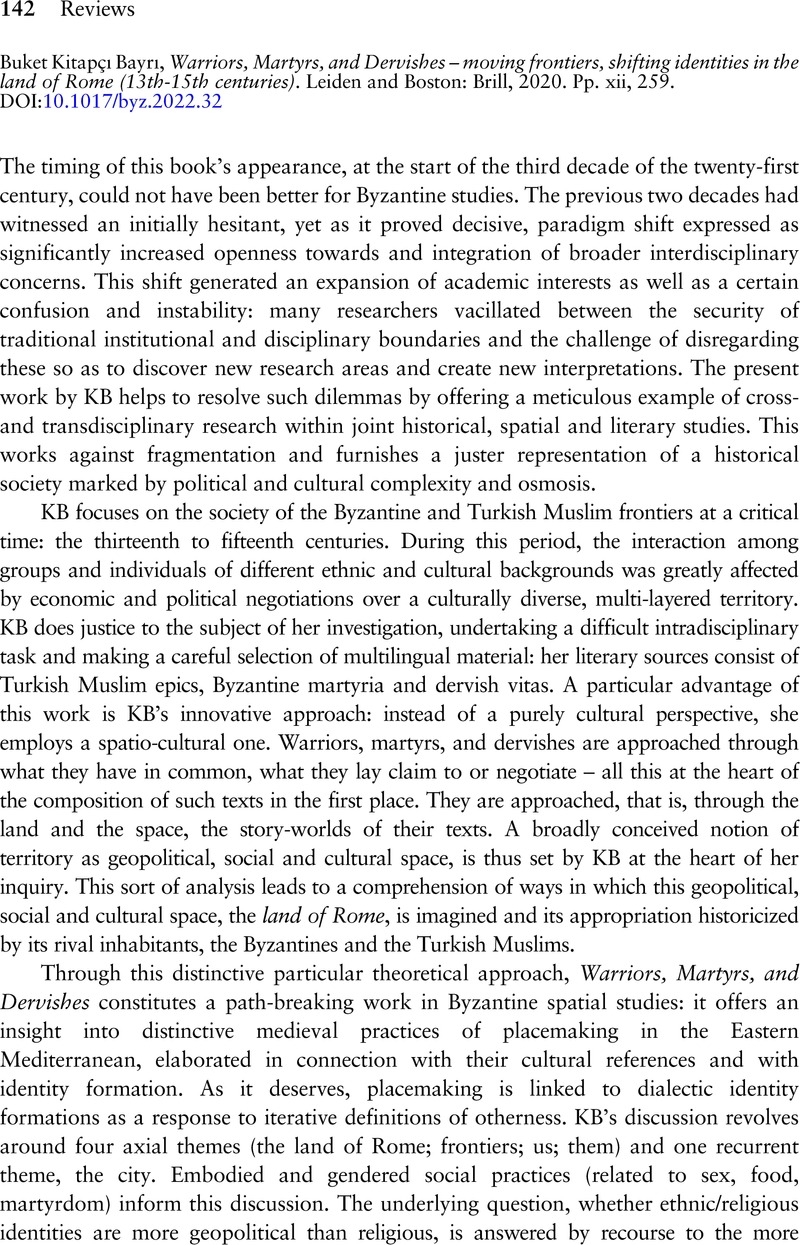No CrossRef data available.
Article contents
Buket Kitapçı Bayrı, Warriors, Martyrs, and Dervishes – moving frontiers, shifting identities in the land of Rome (13th-15th centuries). Leiden and Boston: Brill, 2020. Pp. xii, 259.
Review products
Buket Kitapçı Bayrı, Warriors, Martyrs, and Dervishes – moving frontiers, shifting identities in the land of Rome (13th-15th centuries). Leiden and Boston: Brill, 2020. Pp. xii, 259.
Published online by Cambridge University Press: 09 March 2023
Abstract
An abstract is not available for this content so a preview has been provided. Please use the Get access link above for information on how to access this content.

- Type
- Review
- Information
- Copyright
- Copyright © The Author(s), 2023. Published by Cambridge University Press on behalf of Centre for Byzantine, Ottoman and Modern Greek Studies, University of Birmingham


